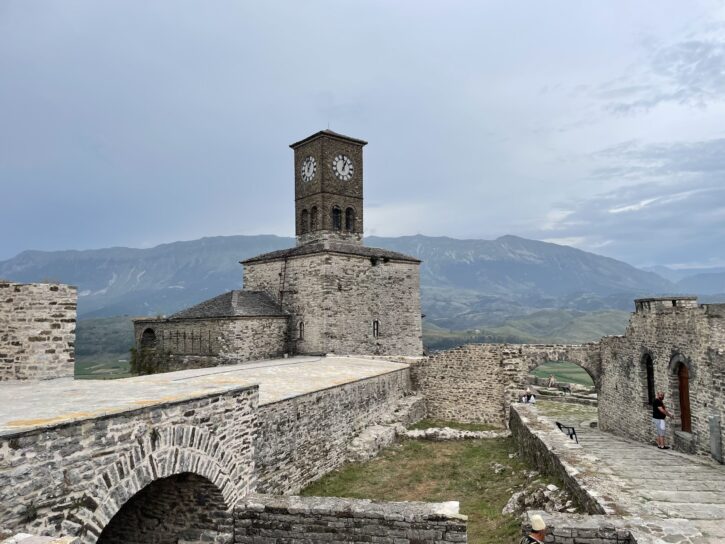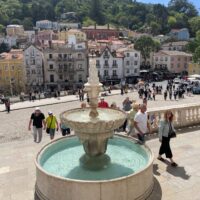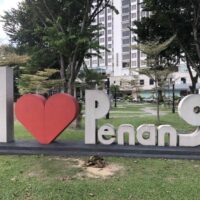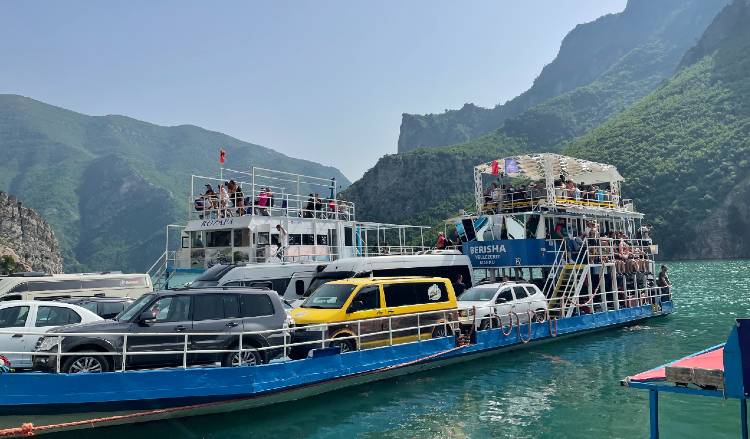In describing Gjirokastra, the words ‘steep’ and ‘stone’ is acceptable. These two words much sum up this historic town build entirely on the tough mountain slopes of Albania’s south.
A UNESCO World Heritage Site characterized by well-preserved slate-roofed houses, near-vertical streets paved with limestone and a castle built from locally available rocks, Gjirokastra is one of the two museum towns in Albania (the other being Berat).
Gjirokastra is a cultural city where you can learn about Albanian history and literally walk back through time by treading the cobbled streets of the bazaar and exploring the depths of the underground city below.
The city also goes by another name – a ‘city of 1000 steps,’ correctly describes Gjirokastra, although I swear there are a lot more steps than that and everything worth seeing here required an uphill walk.
But is also love at first sight.
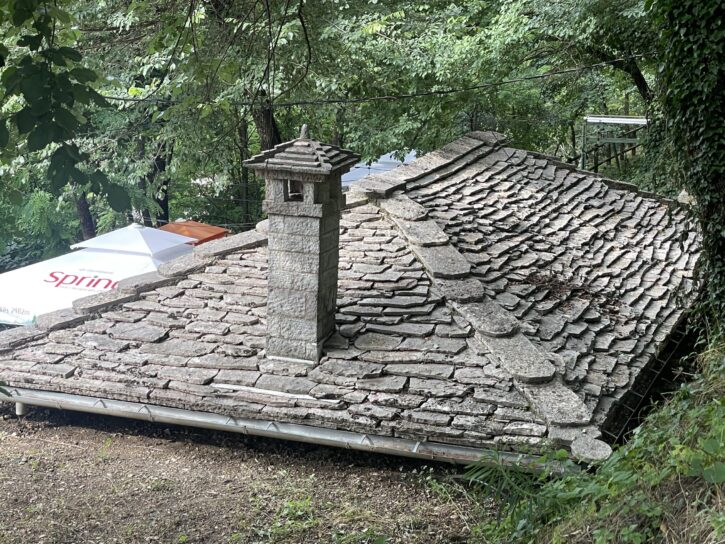
The bazaar of Gjirokastra
From the small balcony of my guesthouse, I observed the castle high up in mountains surrounding the town, wondering how I was going to get to it. A hearty Albanian breakfast and coffee seemed to be solution.
To the bazaar I headed, passing old houses with their beautiful old wooden facades and stone walls. Everything about Gjirokastra seemed so humble. Everywhere around, I smelled a sweet but fresh scent of mountain herbs people tried to sell. Local women with sensible flat leather shoes went about their daily chores in the busy bazaar.
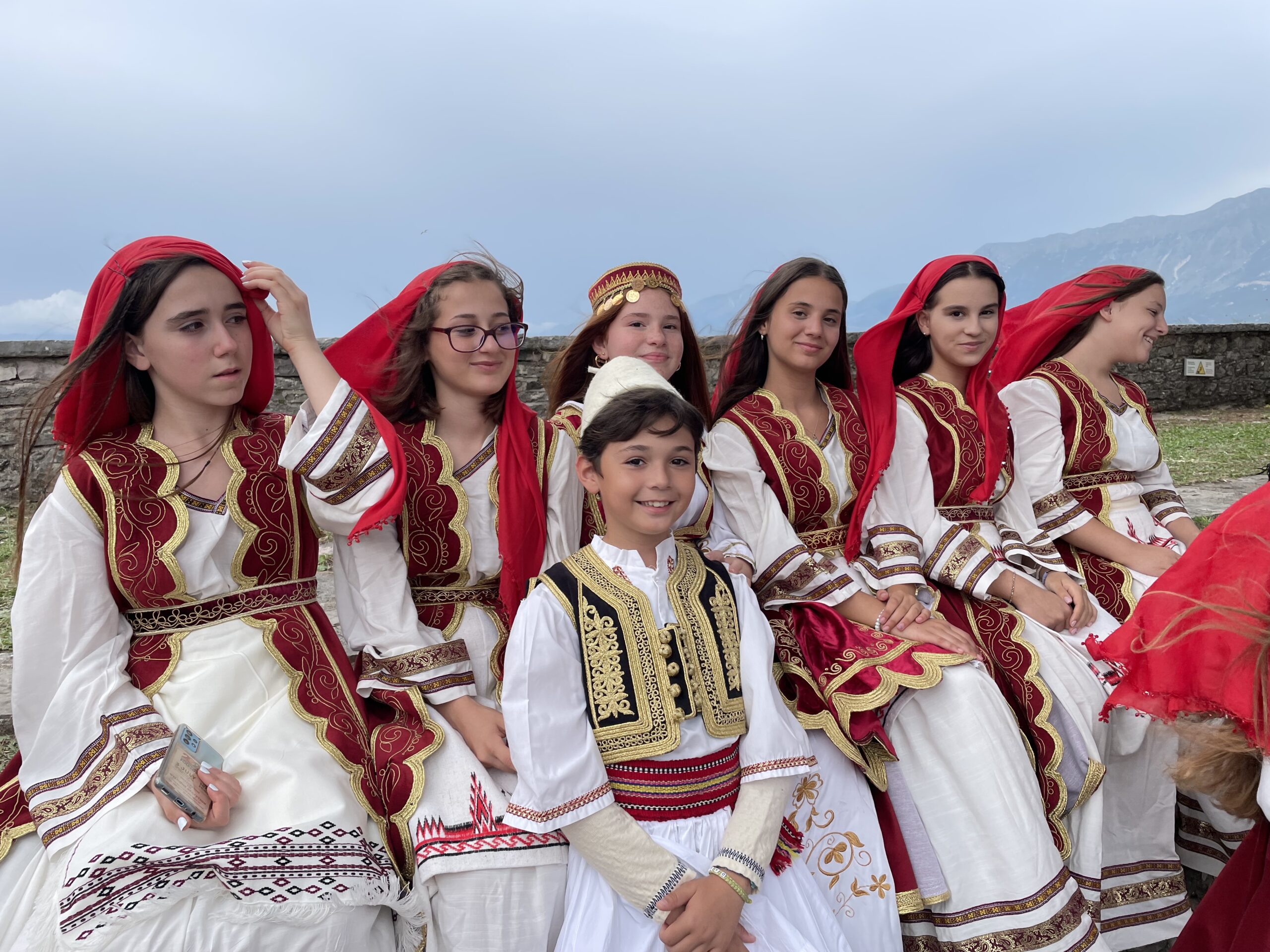
The bazaar was busy. It was the season of music and the bazaar, and its people was dressed up to celebrate it. I casually wandered into the colourful souvenir shops lining the old, cobbled streets where meticulously crafted woodwork and stonework shared space with tacky bracelets, China-made magnets, and souvenirs with Enver Hoxha.
Shiny costumes, bright carpets, brightly dressed people and charming cobbled streets truly made the morning seem as though I had spent it in the early 20th century.
I grabbed a cup of coffee and sat on a chair set in the middle of the street. Clearly, no one minded very much. The stone walls of an old mosque flashed in the bright light. The mosque building was lucky – twelve out of thirteen mosques in Gjirokastra were demolished by the communists, who declared Albania an atheist state. Surprisingly, they saved the 18th-century bazaar mosque as a cultural heritage.
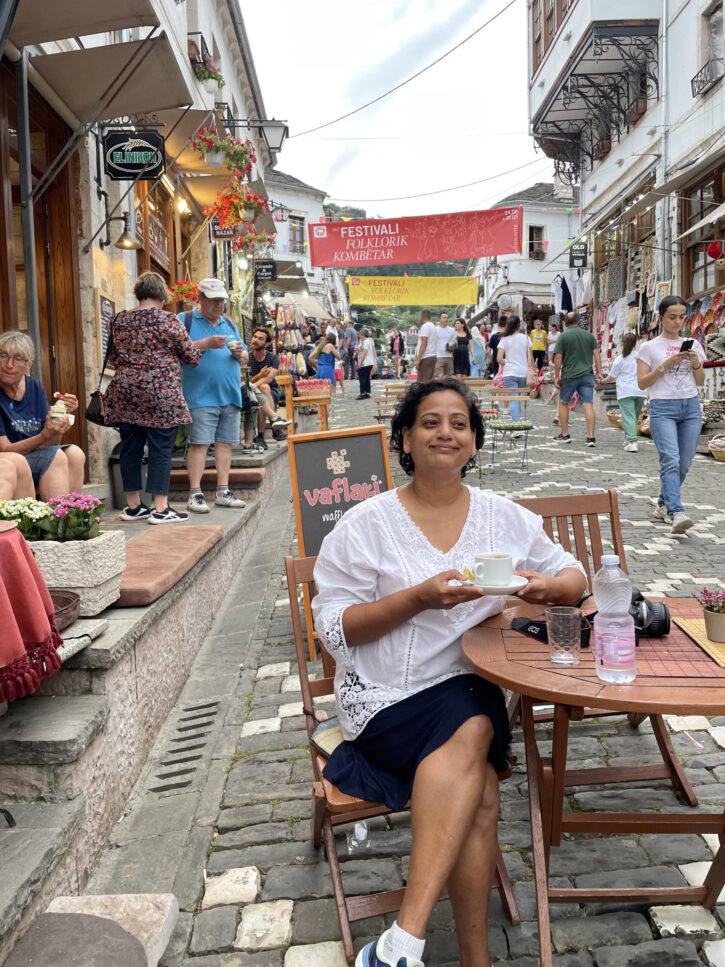
Strolling around the bazaar, I watched the craftsmen at work. Some were deeply immersed in their art, carving in wood or stone, unmindful of watching eyes. Few others, looked up from their handiwork to chat me up.
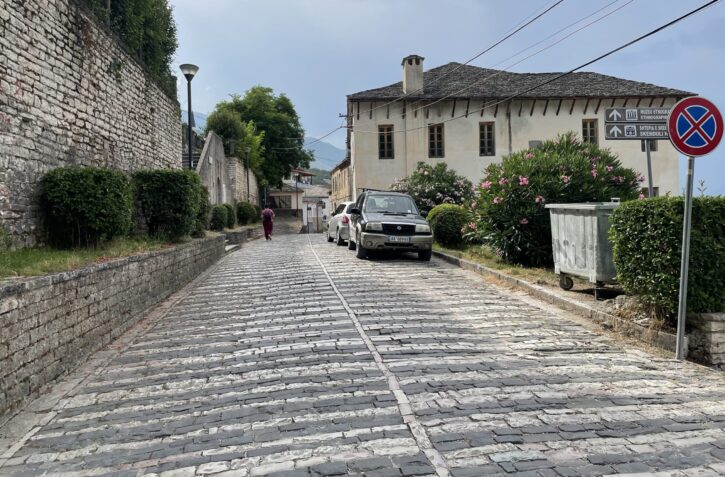
The locals call this old bazaar ‘Qafa e Pazarit’ and this pretty much is what the old town is about. All the streets leading into the old town meet here. The history of Bazaar dates back in 17th century. In fact, there is not much left from that period. A fire destroyed most of the old bazaar in the late 19th century after which it was totally rebuilt – which explains why the buildings have the same architecture. Most of the ground floor houses have been converted into charming cafes, restaurants, and souvenir shops.
The historic Gjirokastra castle
From the bazaar, a steep climb brought me to the castle overlooking the town since the 12th century. Although the castle was built in the 12th century, it was rebuilt in 1812 to the current shape by Ali Pasha of Ioannina. In the early days, over 5000 soldiers lived in it while the extended undergrounds were used to store ammunitions and food. However, most of the structure we admire today, the church, the clock tower etc, comes from the 18th century.
During the rule of King Zog, parts of the fortress were converted into cells for political prisoners. The castle served as a prison under Albania’s Communist Regime, right up until the 1970s.
It is indeed Gjirokastra’s crowning jewel and has its own legend. As all legends go, it involved the Albanian princess Argjiro who threw herself and her son from the heights of the castle to avoid being captured by the Ottomans. The son survived. The name Gjirokastra is said to come from the name of the princess.
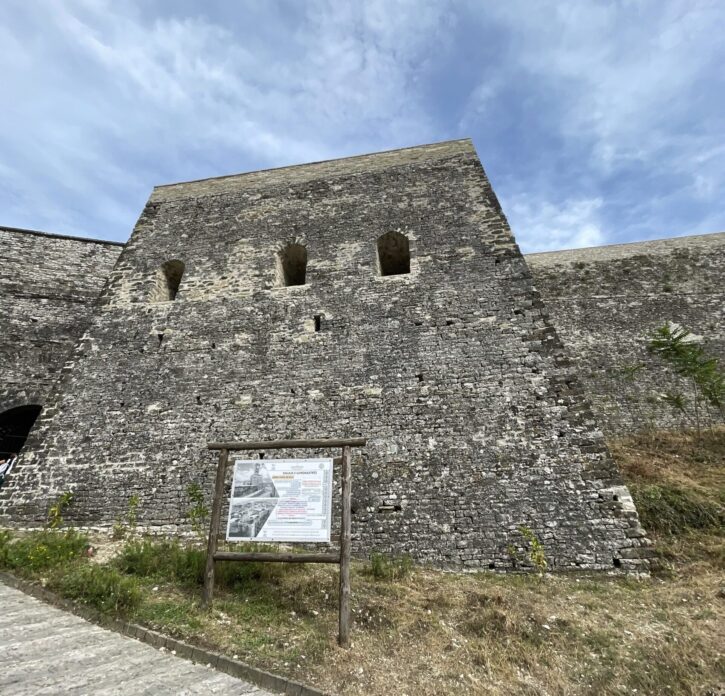
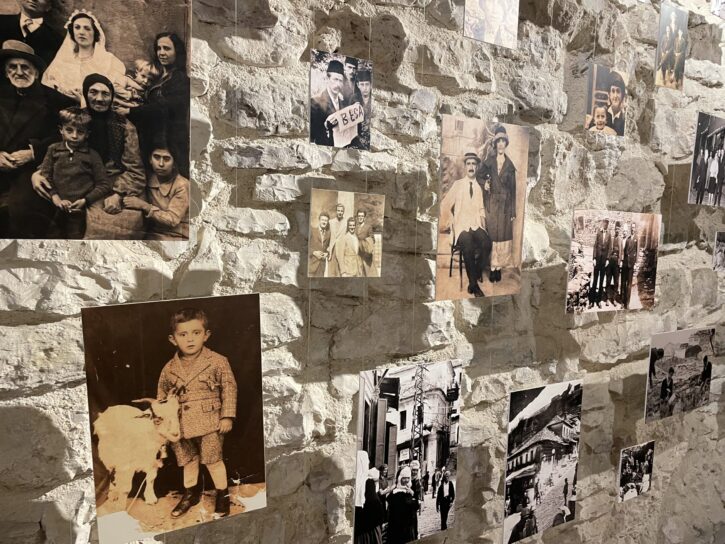
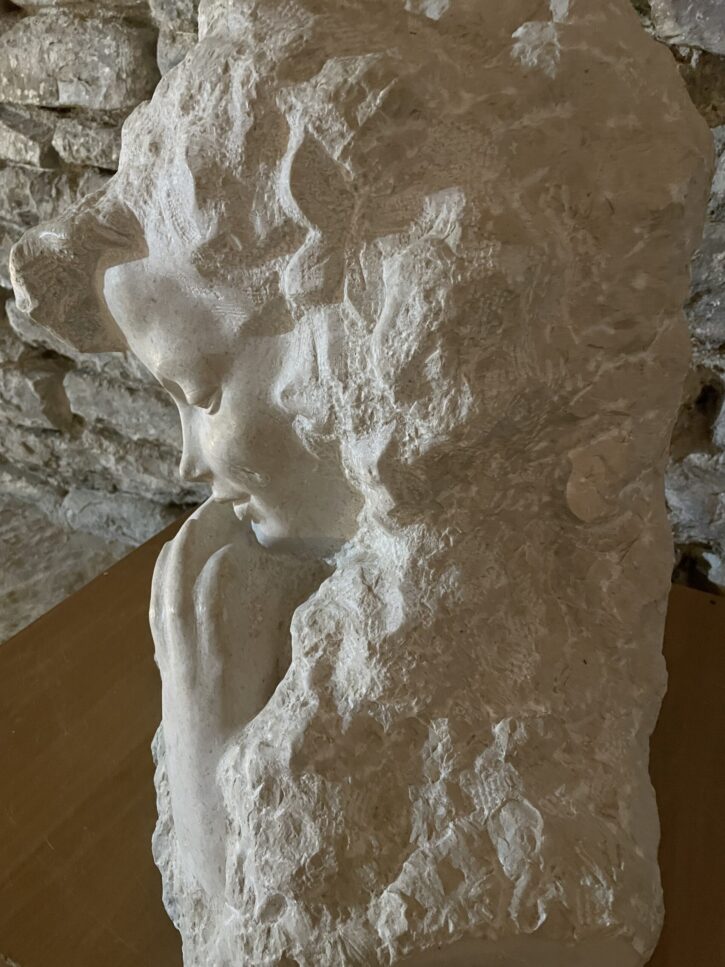
The castle also holds an unusual relic – an American two-seater aircraft that dates back in 1957. During the Cold War, it was considered a victory against the West.
Walking back past the entrance I ended up in the catacombs of the castle with a long gallery displaying various pieces of artillery. The objects are all memories from World War II and contain artillery that was either abandoned or captured from the Italian and German forces and include cannons and a tank. There is a museum here too which displays historical and archaeological objects alongside an explanation of the history of the city. An armaments gallery and a former prison completes the castle.
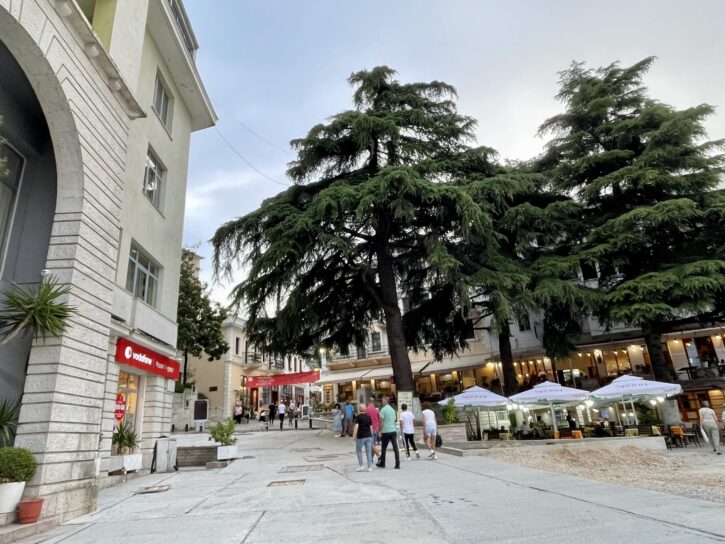
Although the castle has seen some of the darkest times, today it is a place where cheerful events take place – like the National Folklore Festival of traditional Albanian song and dance, something I was glad to witness.
I strongly recommend staying an extra day in Gjirokastra. The town is especially beautiful at dusk, when the sun has hidden behind the mountains and the sky turns pink. Also, highly recommended is to wear comfortable shoes. The streets are steep and made of slippery cobblestone so sometimes walking up or down can be tricky.
Did you know? Gjirokastra is the birthplace of Nobel-laurate writer Ismail Kadare and of Enver Hoxha (a one-time despotic leader).
Back from the castle visit, I enjoyed some local lunch – Qifqi (rice balls with herbs), Sarma (stuffed vine leaves) followed by Oshaf (a pudding made of figs and milk). Truth be told, anything you eat here is almost like a farm-to-table experience because in smaller towns of Albania, people cook with fresh ingredients, mostly grown in their backyards.
Next, it was time to explore some of its famous houses.
The Houses of Gjirokastra
The houses here are very interesting, especially the roof which are made up of stone slabs and appear to be built on top of each other on a hill. However, there are few houses here that are of historical significance –
Zekate House: Built nearly 300 years ago, it is made up of two identical, symmetrical constructions, connected to each other by a balcony. The walls of the main room are adorned in frescoes and the ceilings are carved in wood.
Skendulate House: built over 250 years ago (standing next to the Ethnographic Museum), is well-preserved tall building standing on traditional stone foundations that reach the height of the first-floor windows. The interior is impeccably designed and boasts a total of nine fireplaces and elegant ornate ceilings.
Ismail Kadare’s House: Here, the stones dominate as the main elements, upon which the foundations of the house are built. This house-museum gets plenty of natural sunlight and is among the best-preserved house of cultural importance.
While here, don’t miss…
Whether you’re visiting as a day trip or spending a day or two, here are the very best things to see and do.
- Gjirokaster Obelisk: A monument dedicated to education and the Albanian language. The views of the city and the Old Bazaar are incredible from here.
- Ethnographic Museum: Located in the birth house of Enver Hoxha. The museum shows the traditional lifestyle in the city and is a fascinating place to visit.
- Cold War Tunnel – the 800 meters long underground bunker that served as the emergency shelter in the times of Hoxha’s rule.
- Përmet, the city of roses crossed by Vjosa river, the only wild river in Europe.
- The region of Tepelene, with history and beautiful canyons and waterfalls.
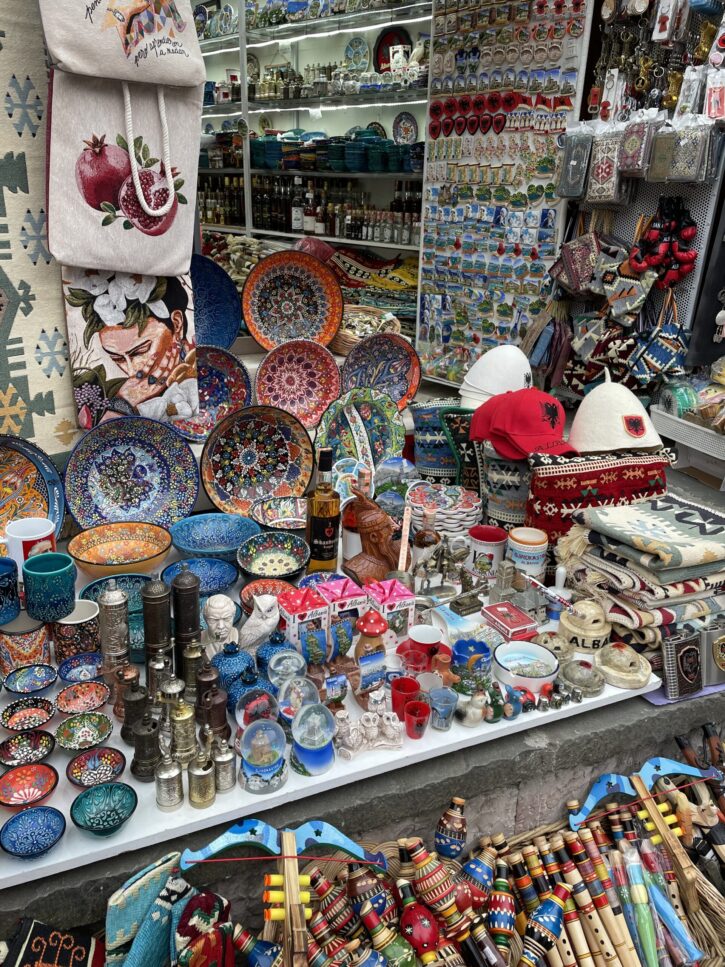
USEFUL INFORMATION
- Summers are extremely hot and dry. The best time to visit is during the shoulder months of May to October.
- There have been reported cases of taxi-scams, so exercise caution when hiring one.
- Gjirokaster is 230 km from the capital Tirana (3.5 hours by bus). It is 180 km from Berat.
- All the buses stop at Boulevard 18 Shatori (at Kastrati gas station). From here a bus or a taxi can take you to your destination. Taxis are quite cheap.
Who Was Ali Pasha of Ioannina
Born in the town of Tepelene (30 kms from Gjirokastra), Ali Pasha was a gangster in his youth. He started with being a ‘master’ for a group from his neighbourhood. Thanks to his diplomatic skills and progressive approach, he soon gained popularity. He networked with Pashas in the regions, helping them put down rebellions. Being opportunistic and allying with whoever offered him what he needed, he became a Pasha and a ruler of a nearly independent state of Ioannina.
How cheap is Gjirokastra
Gjirokastra is a budget traveller’s dream. An iced coffee or cappuccino cost us 1-2 euros each and a glass of wine around the 2 euros.
A snack or light meal can cost anywhere between 3-5 euros while a main should set you back 7-10 euros depending on the dish.
A decent accommodation in the centre of the town (a double bed with private bath) can cost about 40 euro.However if you choose to stay in the historic area, the prices are slightly higher.
Should you stay in Gjirokastra or just day trip?
I strongly recommend staying an extra day in Gjirokastra. The town is especially beautiful at dusk. The town comes alive at 8 pm – not exactly the party vibe but lively in a homely sort of way. The town is pleasantly cool and much calmer to wander around in the morning. Additionally, food and accommodation are cheap.
Also, highly recommended is to wear comfortable shoes. The streets are steep and made of slippery cobblestone so sometimes walking up or down can be tricky.
Hiking Around Gjirokastra
The tourism industry is still relatively new in Albania. While there are numerous options of hiking there aren’t many established hiking trails. Most of the longer hiking trails will be outside of the city. Albania is still pretty wild and untamed.

